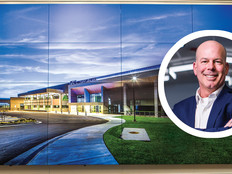Secure and Manage Displays with Strong Passwords and Internet
The management and security of the digital displays varies, but there are commonalities that can ensure signage functions smoothly.
Typically, users broadcasting the messages will have different permissions to access signage throughout the school based on their needs and positions. Administrators will have the broadest access, while educators may only be able to access devices in a particular classroom.
For this reason, password security is key to keeping these displays from being hacked by students or threat actors. Strong passwords and multifactor authentication will ensure these devices remain protected.
Schools may also consider segmenting the devices out on a separate virtual LAN for security and speed. Ultimately, the strength of a school’s network will determine how fast messages can be broadcast to staff and students. This is an especially important consideration for districts that want the option to use signage for real-time emergency alerts.
K–12 IT Leaders Can Choose from a Range of Digital Display Solutions
School districts are primarily implementing digital displays with HDMI capabilities. This isn’t limiting them, however; in addition to standard TV screens, there are interactive touch displays, large-format displays like video wall matrices and even weatherproof outdoor displays.
DIVE DEEPER: K–12 schools are bringing classroom technology to outdoor learning.
Popular brands for digital signage communications include Airtame, ScreenBeam, Kramer and Vivi. User dashboards and cloud capabilities help IT teams and administrators manage the digital displays from anywhere at any time.
Digital displays give schools the option to convey messages visually and in real time. In a world of fast-moving information, improved communication ensures everyone is on the same page when the information is vital.
This article is part of the “ConnectIT: Bridging the Gap Between Education and Technology” series. Please join the discussion on Twitter by using the #ConnectIT hashtag.






![[title]Connect IT: Bridging the Gap Between Education and Technology](http://www.edtechmagazine.com/k12/sites/default/files/articles/2014/05/connectit.jpg)




